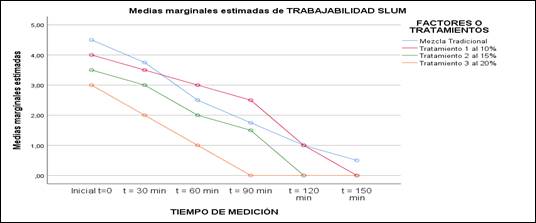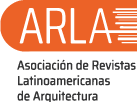Comparative analysis of the strength to compression, flexure and workability of traditional concrete versus a concrete using steel slag as fine aggregate
DOI:
https://doi.org/10.51372/gacetatecnica231.3Keywords:
steel slag, compressive strength, bending and workabilityAbstract
The objective of this research is to determine the influence of slag as a global aggregate on compressive strength, bending and workability for a concrete f'c=20594 kPa. Steel slag was used in 10%, 15% and 20% as fine aggregate, in this way an alternative for the use of recycled materials is shown, in order to create an efficient and economical concrete, as well as friendly with the environment, where there is a large amount of steel slag, coming from workshops and companies dedicated to metal structures. This is due to the fact that they use steel welding, in order to minimize environmental contamination, since it would be shown that the steel slag would have a good behavior for the development of an experimental concrete. The method used is quantitative, using data observation panels as a data collection tool, they use inferential statistics of the data obtained to demonstrate hypotheses. It was concluded that the breakage, wear and elasticity tests carried out at 7, 14 and 28 days provided the optimal design to use 10% for the use of recycled steel slag in the three pre-established objectives
Downloads
References
O. A. Díaz, “La evolución de la industria del cemento con énfasis en Latinoamérica”, Universidad San Carlos de Guatemala, 2012
A. Sotil y J. Zegarra, “Análisis comparativo del comportamiento del concreto sin refuerzo, concreto reforzado con fibras de acero Wirand® FF3 y concreto reforzado con fibras de acero ….”, Disponible en : https://repositorioacademico.upc.edu.pe/handle/10757/581616, 2015
Sociedad Pública de Gestión Ambiental (IHOBE), “Cuentas Anuales e Informe de Gestión 2015”, Disponible en: https://www.euskadi.eus/contenidos/informacion/cuentas_anuales_ee_sspp/es_spe_cae/adjuntos/2010_VI_IHOBE.pdf, 2015
Asociación Latinoamericana de Acero (ALACERO), “Asociación Latinoamericana de Acero”, Disponible en: https://www.alacero.org, 2020
M. Abdullah y E. Jallo, “Mechanical Properties of Glass Fiber Reinforced Concrete” AL-Rafdain Eng. J., vol. 20, no. 5, pp. 128–135, doi: 10.33899/rengj.2012.61048, 2012
F. Abanto, "Tecnología del concreto", 3ra Edició. Lima. Perú: Universidad Nacional Mayor de San Marcos, 2018
C. Castiblanco y L. Carrero, “Estudio teórico y experimental del comportamiento del hormigón con materiales no convencionales: Fibras de vidrio y fibras de carbono, sometido a esfuerzos de compresión”, Universidad Católica de Colombia, 2015
A. Montejo, F. Montejo, y A. Montejo, "Tecnología y patología del concreto armado", Bogotá. Colombia: Universidad Católica de Colombia, 2013
M. Olivares Santiago, C. Galán Marín, y J. Roa Fernández, “Los composites. Características y aplicaciones en la edificación,” Inf. la Construcción, vol. 54, no. 484, pp. 45–62, doi: 10.3989/ic.2003.v54.i484.568, 2003
M. Salinas, "Elaboración de Expedientes Técnicos", Lima, Perú: Fondo Editorial Instituto de la Construcción y Gerencia (ICG), 2015
Norma ASTM C 31/ C 31M, “Práctica Estándar para Fabricación y Curado de Especímenes de Concreto” USA: ASTM Internacional, 2003
Norma NTP_400.012, “Análisis granulométrico del agregado fino y grueso global” Norma Técnica Peruana, 2002
RNE, “Reglamento Nacional de Edificaciones. E.060 Concreto Armado”, Perú, 2017
ACI 201.2R-07, “Guide to durable concrete”, American Concrete Institute (ACI), 2000
Jo BW, Kim CH, Lim JH, “Characteristics of cement mortar with nano-SiO2 particles” ACI – Mater, 2007
I. Tobón, “Evaluación del Desempeño del Cemento Portland adicionado con Nanoparticulas de Silice”, Tesis doctoral, Universidad Nacional de Colombia, Medellín, Colombia, 2011
E. Huincho Salvatierra, “Concreto de alta Resistencia usando aditivo superplastificante, microsílice y nanosílice con cemento portland tipo I”, Tesis de pregrado, Facultad de Ingeniería Civil, Universidad Nacional de Ingeniería, Lima, Perú, 2011

Published
How to Cite
Issue
Section
Copyright (c) 2022 Armando Camarena Flores, David Díaz Garamendi

This work is licensed under a Creative Commons Attribution-NonCommercial-ShareAlike 4.0 International License.
The opinions expressed by the authors do not necessarily reflect the position of the editor of the publication or UCLA. The total or partial reproduction of the texts published here is authorized, provided that the complete source and electronic address of this journal is cited. Authors have the right to use their articles for any purpose as long as it is done nonprofit. The authors can post on the internet or any other media the final approved version of their work.






.png)




